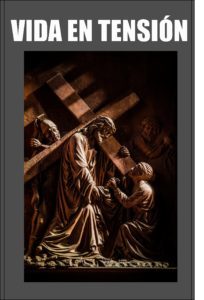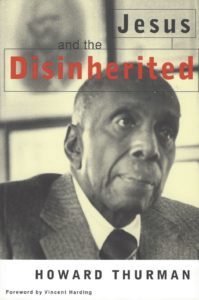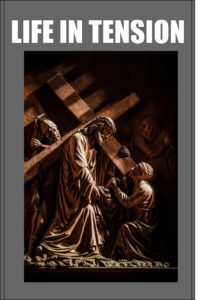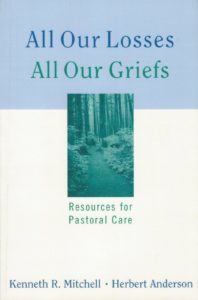Stephen W. Hiemstra's Blog, page 157
June 5, 2020
Muestra Misericordia, Recibe Misericordia

Honrado son los misericordiosos,
pues ellos recibirán misericordia
(Matt 5:7)
Por Stephen W. Hiemstra
La misericordia resalta nuestra tensión con Dios porque nuestra carne no se deleita en practicar la misericordia ni en ofrecerla. En lugar de practicar la misericordia, preferimos que las personas cumplan sus promesas y paguen sus facturas; en lugar de pedir para misericordia, preferimos a fingir que somos sin pecados. Nacido en pecado, la misericordia enfoque atención sobre nuestra falta de santidad y nuestra finitud, destacando nuestra tensión con Dios.
La misericordia es uno de las firmas características de Dios ( Wilkins 2004, 208; Guelich 1982, 88). Aparece en la Regla de Oro, en la Oración del Señor, y, lo que es más importante, en la breva lista de atributos de Dios dada a Moisés inmediatamente después los Diez Mandamientos por el Monte Sinaí:
El SEÑOR descendió en la nube y estuvo allí con él, mientras éste invocaba el nombre del SEÑOR. Entonces pasó el SEÑOR por delante de él y proclamó: El SEÑOR, el SEÑOR, Dios compasivo y clemente, lento para la ira y abundante en misericordia y verdad (fidelidad); que guarda misericordia a millares, el que perdona la iniquidad, la transgresión y el pecado, y que no tendrá por inocente al culpable; que castiga la iniquidad de los padres sobre los hijos y sobre los hijos de los hijos hasta la tercera y cuarta generación.” (Exod 34:4–7)
El contexto de Sinaí es importante aquí porque Dios expone su rasgos de carácter a Moisés como un conjunto de valores centrales que se utilizarán para interpretar la ley correctamente. Los hacedores de leyes experimentadas saben que las leyes tomadas fuera de contexto pueden malinterpretarse y frecuentemente publican comentarios para asegurar una interpretación apropriada. Para interpretar la carácter de Dios correctamente, comience por reconocer que Dios es misercordioso. Dios demuestra su misericordia en que Jesús murió voluntariamente por la cruz para salvarnos de nuestros pecados—nuestra expiación a través de Jesús confirma su divinidad precisamente porque ejemplifica la misericordia de Dios (1 Cor 15:3).
La misericordia aparece en muchas formas gramática en las escrituras, pero la forma adverbial usada en la Quinta Bienaventuranza no se usa en ningún otro lado. Esta forma puede usarse para declarar o se presentar como causa (Wallace 1996, 460–461). Misericordioso significa “preocuparse sobre las personas en su necesidad, misericordia, simpático, compasionado” (BDAG 2487) y se deriva de la misma raíz que la compasión.
La misericordia y el perdón aparecen como dos caras de la misma moneda (Guelich (1982, 88), mientras leemos:
Acuérdate, oh SEÑOR, de tu compasión y de tus misericordias, que son eternas. No te acuerdes de los pecados de mi juventud ni de mis transgresiones; Acuérdate de mí conforme a tu misericordia, por tu bondad, oh SEÑOR. (Ps 25:6-7
El Salmista habla de la misericordia, el amor, y la bondad que juntos constituyen el perdón.
Jesús repetidamente habla de la misericordia, como cuando leemos:
1. Pero vayan, y aprendan lo que significa: misericordia quiero y no sacrificio (Nos 6:6); porque no he venido a llamar a justos, sino a pecadores. (Matt 9:13, 12:7)
2. ¡Ay de ustedes, escribas y Fariseos, hipócritas que pagan el diezmo de la menta, del anís y del comino, y han descuidado los preceptos más importantes de la ley: la justicia, la misericordia y la fidelidad! Estas son las cosas que debían haber hecho, sin descuidar aquéllas. (Matt 23:23)
3. ¿No deberías tú también haberte compadecido de tu consiervo, así como yo me compadecí de ti? (Matt 18:33)
Claramente Jesús valora la misericordia más que el cumplimiento legal o el castigo.
También habla sobre la misericordia usando otras palabras o frases, como en:
1. Por eso, todo cuanto quieran que los hombres les hagan, así también hagan ustedes con ellos, porque ésta es la Ley y los Profetas. (Matt 7:12)
2. Y perdónanos nuestras deudas (ofensas, pecados), como también nosotros hemos perdonado a nuestros deudores (los que nos ofenden, nos hacen mal). (Matt 6:12)
En el primer ejemplo de la Regla Oro, use la forma recíproca (haz lo que quieras que haga) también usó en la Quinta Bienaventuranza (da misericordias, recibe misericordia) que sugiera a través de construcción paralel que un concepto paralel es también se discutir (France 1985, 110).
La forma recíproca de la Quinta Bienaventuranza hace un convenciendo caso por misericordia. La misericordia no se gana por medio de ser misericordioso, pero la misericordia sugiera la presencia de Dios y somos bendicido cuando lo ofrecemos.
Referencias
Bauer, Walter (BDAG). 2000. A Greek-English Lexicon of the New Testament and Other Early Christian Literature. 3rd ed. ed. de Frederick W. Danker. Chicago: University of Chicago Press. .
France, R.T. 1985. Matthew. Tyndale New Testament Commentaries. Downers Grove: IVP Academic.
Guelich, Robert. 1982. The Sermon on the Mount: A Foundation for Understanding. Dallas: Word Publishing.
Wilkins, Michael J. 2004. The NIV Application Commentary: Matthew. Grand Rapids: Zondervan.
Muestra Misericordia, Recibe Misericordia
Ver también:
Gospel as Divine Template
Otras formas de participar en línea:
Sitio del autor: http://www.StephenWHiemstra.net,
Sitio del editor: http://www.T2Pneuma.com.
Boletín informativo: https://bit.ly/Ready_2020
The post Muestra Misericordia, Recibe Misericordia appeared first on T2Pneuma.net.
June 3, 2020
Water Cooler Observations, June 3, 2020

By Stephen W. Hiemstra
This evening (6/3/2020) on the world news, we witnessed something almost unheard of—a Monday afternoon demonstration. We’ve seen unhappy people; we’ve seen riots; we never see Monday demonstrations—Saturday is the preferred day for demonstrations, because most demonstrators have to work. With forty million unemployed in the United States today and warm summer weather, weekday demonstrations may become more common.
Again this year, we find ourselves confronted with a Gethsemane moment. Will we turn to God or turn into our pain?
The Police Thing
Institutional failure is a tough nut to crack. If institutional racism were an easy problem to solve, it would have already happened.
We have two issues to deal with, one local and the other national.
Locally, police departments need to clear out the bad apples and deal
with institutional prejudice. A generation after eliminating
racial prejudices in law, spending billions of dollars on Great Society programs, and electing a black president, we still have a problem.
Nationally, America needs to wake up to the fact that local funding of
police is a problem in urban areas lacking an effective tax base. Shoestring financing leads to recruitment problems, cutting corners on training and toleration of bad apples. The same financial deficiency has given us broken school systems. National funding and leadership is needed to turn this around.
Progress and Resentment
Relatively few people today are overtly racist which is why the demonstrations we are seeing represent a wide demographic. Unlike in the sixties, today we have a large, black middle class. The racial epithets that were common in the sixties are no longer part of daily speech.
Still, the Amy Cooper incident last month in Central Park, NYC is a reminder that racism in America is no longer a holdover from the Jim Crow era in southern history. It may well be that the development of a black middle class has sparked resentment from other groups that have not progressed nearly so well in recent years.
Reconciliation requires true dialog where both parties listen to each other. Reconciliation is hard—good guy, bad guy attitudes have to go. Solutions to the problem of racism also need to include other disadvantaged groups not having so articulate a political following. Cities that have learned to reconcile have seen real progress that is absent in cities that have not.
The Example of Food Stamps
An example of a successful national program is found in the food stamp program. Self-service grocery stories cannot exist in areas where poor people cannot afford to eat because they are prone to shoplift. As supermarkets anchor many shopping centers and malls, the provision of food stamps actually services to spur development of more than just food stores.
Food stamps are funded nationally, but the benefits are local and do not advantage one minority group over another. Food stamps were originally sold to Congress as a subsidy to farmers, not as a public assistance measure. In the same way, scholarships to deserving urban and rural high school graduates are a subsidy to the college that they attend that are right now in need of financial support as foreign students have stopped coming because of the pandemic.
Looking Beyond the Race Issue
The usual response to broken police departments is to hire a black police
chief or buy some body cameras. This response is cheap and gives the appearance of change. As time passes, this response usually does not solve the problem of a lack of funding and institutional neglect.
The elephant in the room here is that the U.S. economy is not producing enough high-quality jobs for low-skilled workers. Even though we had record low unemployment as late as January 2020, many people—especially young people and minorities—remained stuck in dead-end jobs earning little more than the minimum wage. When the smoke clears, we will not go back to Saturday demonstrations until this problem is resolved.
Be an Ethical Voice
It is hard to offer an ethical voice in the current environment. What story would the Holy Spirit advise us to embrace if we took the time to ask in our current Gethsemane moment?
My ministry focus has been on serving the Hispanic community here in Northern Virginia since about 2012. Before that, I spent six months interning in Providence Hospital in northeast Washington DC—the only Medicare hospital in the District serving primarily African Americans that was closed last year. Both Hispanics here and African Americans in the District suffer from prejudice, which is obvious for all to see.
My hope that my volunteer work in Hispanic ministry and my writing in English and in Spanish will serve to bridge communities that do not normally communicate a lot. I cannot change the world, but I can change myself and be a catalyst for reconciliation for those around me.
Water Cooler Observations, June 3, 2020
Also see:
Water Cooler Observations, May 27, 2020
Water Cooler Observations, May 20, 2020
Water Cooler Observations, May 13, 2020
Water Cooler Observations, May 6, 2020
Water Cooler Observations, April 29, 2020
Interview about the Corona Life in English and Spanish with Stephen W. Hiemstra, April 24, 2020
Water Cooler Observations, April 22, 2020
Water Cooler Observations, April 15, 2020
Water Cooler Observations, April 8, 2020
Water Cooler Observations, April 1, 2020
Water Cooler Observations, March 25, 2020
Corona Virus Versus the Flu
Black Plague
CDC Flu Statistics
Managing Change
Believer’s Prayer
Other ways to engage online:
Author site: http://www.StephenWHiemstra.net
Publisher site: http://www.T2Pneuma.com.
Newsletter: https://bit.ly/Release_2020
The post Water Cooler Observations, June 3, 2020 appeared first on T2Pneuma.net.
June 2, 2020
Thurman: Re-imagining Pain at the Cross
 Howard Thurman. 1996. Jesus and the Disinherited (Orig Pub 1949). Boston: Beacon Press.
Howard Thurman. 1996. Jesus and the Disinherited (Orig Pub 1949). Boston: Beacon Press.
Review by Stephen W. Hiemstra
Dr. Martin Luther King Jr. was a pastor who carried at least two books with him wherever he went. One comes as no surprise: a Bible. The other was Howard Thurman’s Jesus and the Disinherited (xii). When I heard this, I was curious to read Thurman.
Who is Howard Thurman?
Howard Thurman (1899–1981) was one of the three most influential African American preachers of the 20th Century. He was also an author, philosopher, theologian, educator, civil rights leader, and Dean of Chapel at Howard University and Boston University for more than two decades[1].
Thurman is a powerful, yet humble writer. In his preface, he wonders out loud: Why is it that Christianity seems impotent to deal radically, and therefore effectively, with the issues of discrimination and injustice on the basis of race, religion, and national origin? (8) He goes on to write: the striking similarity between the social position of Jesus in Palestine and that of the vast majority of American Negroes is obvious to anyone who tarries long over the facts (ix).
Social Position
Using social position to interpret the person and teaching of Jesus marks Thurman as an antecedent of liberation theology. The basic idea is that starting from a position of affluence and privilege when Jesus was poor and marginalized makes it hard to interpret Jesus’ words and teaching correctly. It is easier to interpret Jesus when your own social position (poor and marginalized) is roughly the same. If you substitute the neutral word “context” for “social position” in this sentence, then virtually every hermaneutics instructor today would agree.
Thurman argues that taking Jesus out of context, particularly social context, allows interpreters to insert their own social context and read Jesus’ words in ways not intended. In effect, he is arguing that Christianity’s impotence in dealing with discrimination and injustices has at its core a misunderstanding of the Biblical accounts themselves.
Still, “social position” does not substitute easily for “context” as an upper-middle class hermaneutic. In my work at Providence Hospital in northeast Washington DC, I was shocked to learn that how common the scars of violence were among African American patients. While it is rare among white Americans to know someone who has been shot or murdered, it is common among African Americans—such trauma is part of their daily lives. How can someone correctly read an account in the Bible subtly referring to indignities committed when those same indignities are outside one’s personal experience? “Social position” does not substitute easily for “context” as an upper-middle class hermaneutic.
Thurman describes Jesus’ social position as a poor Jew from a minority group—a Galilean (16-18). Worse, Jesus’ hometown of Nazareth was within a couple miles of Sepphoris—a Roman garrison burned to the ground just before Jesus’ birth in response to a Galilean rebellion. Thurman speculates that, as a young carpenter, Jesus probably helped rebuild Sepphoris and was no doubt painfully aware of his own social position (18). For example, do you think someone from Centreville, Virginia might be totally ignorant of the Battle of Manassas, Virginia (5 miles away) twenty years after the Civil War? Thurman has clearly tarried over the facts here.
Sepphoris
Evidence that Jesus was personally affected by his context shows up in his use of the word, hypocrite (e.g. ὑποκριτά; Luke 6:42 BNT). In the Greek before Jesus, hypocrite meant primarily ‘play-actor, role-player’ (BDAG 7615). In the Old Testament, by contrast, hypocrite appears only twice in the Book of Job in the Septuagint (Greek translation) and the Hebrew word used denotes profane (וְֽחַנְפֵי Job 36:13 WTT; also Job 34:30), not two-faced as in a role-player. Why would Jesus be aware of this Greek word? Sepphoris had a Greek amphitheatre. Jesus no doubt knew first-hand what an actor was and he re-defined the word in his own usage. Thurman (72-73) makes the point that Christians on the margin of society need to be especially vigilant in avoiding hypocrisy.
Clearly, even in Nazareth Jesus was not isolated from the tensions of his day—and he was not a Roman or even a privileged Jew. Writing as an African-American man in the 1940s, Thurman observes: If a Roman soldier pushed Jesus into a ditch, he could not appeal to Caesar; he would be just another Jew in a ditch (33). Do you think that Thurman wrote from personal experience? The answer is clearly yes (78-79).
Outline of Thurman’s Disinherited
Thurman’s Jesus and the Disinherited is a short book with only 5 chapters and an epilogue. The chapter titles speak to his concerns:
Jesus–An Interpretation.
Fear.
Deception.
Hate.
Love.
He writes a brief preface. The forward is written by Vincent Harding. Thurman’s audience is not primarily white Americans, although he recognizes that they are probably listening. No, he writes a cautionary note to African American Christians about how to remain faithful in a context of persecution.
Reading Thurman changed the way that I read scripture. In quiet moments, I use a mind experiment to highlight the importance of context. Imagine Jesus sitting on a stool in the middle of a room with four walls. Each wall has a different landscape picture—say, a beach scene, a workroom, a kitchen, a barnyard. Now, imagine walking around Jesus with a video camera so that you picture him against each of these landscapes. How does the change in context color your perception of Jesus? Having finished this exercise, repeat this experiment with different social groups; different social situations. If context is fluid and carelessly employed, we get whatever view of Jesus that is most congenial to our own social position.
Assessment
Thurman’s Jesus and the Disinherited is an important, but hard, book to read—especially if you do not agree with everything that is said. His critique is particularly convicting for me knowing that he taught at Howard University—only a few miles from where I grew up and within walking distance of the hospital where I interned as chaplain. Thurman observed and experienced racism, but he also rejected hatred, fear, and bitterness. Out of great pain, Thurman speaks with an authentic, Christian voice. We should too.
Footnotes
[1] http://en.wikipedia.org/wiki/Howard_T...
Thurman: Re-imagining Pain at the Cross
The post Thurman: Re-imagining Pain at the Cross appeared first on T2Pneuma.net.
June 1, 2020
Completeness: Monday Monologues (podcast) June 1, 2020
 Stephen W. Hiemstra 2020 (Ken Burtram Photography)
Stephen W. Hiemstra 2020 (Ken Burtram Photography)By Stephen W. Hiemstra
This morning I will share a prayer and reflect on completeness. After listening, please click here to take a brief listener survey (10 questions).
To listen, click on this link.
Hear the words; Walk the steps; Experience the joy!
Completeness: Monday Monologues (podcast) June 1, 2020
Also see:
Monday Monologue On March 26, 2018
Other ways to engage online:
Author site: http://www.StephenWHiemstra.net,
Publisher site: http://www.T2Pneuma.com.
Newsletter: https://bit.ly/Ready_2020
The post Completeness: Monday Monologues (podcast) June 1, 2020 appeared first on T2Pneuma.net.
May 31, 2020
Confessional Prayer

By Stephen W.Hiemstra
Creator God,
We praise you for creating us in your image, complete in ourselves yet complementary with one another.
We confess that we have been too quick to sin, and too slow to forgive. Thank you for the gift of Your Son and Our Savior, Jesus Christ.
Forgive us; restore us; redeem us—teach us to imitate you so that we might grow more and more like you every day.
May we ever hunger and thirst for your righteous presence day by day.
Through the power of the Holy Spirit and in Jesus’ name, Amen.
Confessional Prayer
Also see:
Believer’s Prayer
Other ways to engage online:
Author site: http://www.StephenWHiemstra.net
Publisher site: http://www.T2Pneuma.com.
Newsletter: https://bit.ly/Ready_2020
The post Confessional Prayer appeared first on T2Pneuma.net.
Oración Confessional

Por Stephen W. Hiemstra
Dios creador,
Te alabamos por crearnos a tu image, completo en nosotros mismos todavía complementario con los demás.
Confesamos que hemos sido demasiado rápidos a pecar, y demasiado lentos a perdonar.
Gracia por el done de tu hijo y nuestro salvador, Jesucristo.
Perdónanos; restaurarnos; redímenos—enséñanos a imitarte para que podamos crecer cada vez más como tú todos los días.
Que siempre tengamos hambre y sed de tú rectitud presencia día a día.
A través del poder de tu Espíritu Santo y en el nombre de Jesús, Amén.
Oración Confessional
Ver también:
Oración del Creyente
Otras formas de participar en línea:
Sitio del autor: http://www.StephenWHiemstra.net,
Sitio del editor: http://www.T2Pneuma.com.
Boletín informativo: https://bit.ly/Ready_2020
The post Oración Confessional appeared first on T2Pneuma.net.
May 29, 2020
In Jesus Completeness is Restored

“So God created man in his own image, in the image of God he created him; male and female he created them.” (Gen. 1:27 ESV)
By Stephen W. Hiemstra
Our tension with God, hungering and thirsting for righteousness, arises out of our incompleteness. We are created in God’s image, but only as a complement with our spouse, or future spouse, and then only incompletely. We remain separated from God by our unholiness and by our finitude. We yearn to complete our incompleteness; we yearn to be whole. We remain creatures of God’s creation. Yet, gardeners thrown out of the garden.
So we have reminders.
We are reminded by mere physical things: an empty stomach hungers; a dry mouth thirsts; our loneliness.
We are reminded by our limitations. We fail to keep our promises and to realize our potential.
We are reminded also by spiritual deficits. Our sin cuts us off both from our neighbors and from God. We fall short of the mark; we transgress boundaries; we fail to do the things that we should.
So we are thrown out of the garden.
Out of the garden, we feel shame and guilt.
Out of the garden, we cannot realize our destiny.
Out of the garden, completeness and holiness and fellowship with God are out of our reach.
So Jesus offers us a path back back to wholeness.
Back to restoration and healing.
Back to the garden and our destiny.
Back to our completeness and holiness and fellowship with our maker.
“Blessed are those who hunger and thirst for righteousness, for they shall be satisfied.” (Matt. 5:6 ESV)
In Jesus Completeness is Restore
Also see:
Preface to a Life in Tension
Other ways to engage online:
Author site: http://www.StephenWHiemstra.net
Publisher site: http://www.T2Pneuma.com
Newsletter: https://bit.ly/Release_2020
The post In Jesus Completeness is Restored appeared first on T2Pneuma.net.
En Cristo se Restaura la Integridad

Dios creó al hombre a imagen suya,
a imagen de Dios lo creó; varón y hembra los creó.
(Gen 1:27)
Por Stephen W. Hiemstra
Nuestra tensión con Dios, nuestro hambre y sed de rectitud, surge de nuestra incompletitud y separación. Incompletamente, llevamos la imagen de Dios en la era actual, separado por nuestra falta de santidad y finitud de nuestro creador santo y eterno. Mientras quedamos criaturas en la creación de Dios, somos también jardineros expulsados del jardín por nuestro pecado. Incluso en nuestro pecado, anhelamos ser santo; incluso en nuestra separación, queremos se reunionado.
Entonces, en nuestros anhelos y esfuerzos, tenemos recordatorios:
Recordatorios como la privación físicos: un estomago vacío tiene hambre; una boca seca tiene sed; un individuo separado está solo.
Recordatorios como nuestras limitaciones: sueños olvidados; promesas incumplidas; potencial no realizado.
Recordatorios como déficits espirituales: los tiempos cuando no alcanzamos del marco; los límites que transgredamos; las cosas que descuidamos.
Entonces, para nuestros pecados, transgresiones, y negligencias, somos arrojados del jardín:
Fuera del jardín, nuestra energía se falla; nuestros corazones y mentes se sienten vacios; y el dolor es nuestro único compañero.
Fuera del jardin, nuestra límites se reducen; nuestra causa parece pérdida ; y nuestra destina más allá del alcance.
Fuera del jardín, sentimos vergüenza, cupla, y pena; escuchamos ira, rechazo y acusación; nos vemos a nosotros mismos como incompletos, pecaminosos, y no deseados.
A pesar de nuestras debilidades, limites, y emociones, Jesús nos ofrece un camino de regreso a la
integridad.
Regreso de restauración y sanidad.
Regreso al jardín y nuestro destino.
Regreso a nuestra integridad y santidad y compañerismo con nuestro hacedor.
Jesús dijo: “Honrados los que tienen hambre y sed de justicia, pues ellos serán saciados.” (Matt 5:6)
En Cristo se Restaura la Integridad
Ver también:
Gospel as Divine Template
Otras formas de participar en línea:
Sitio del autor: http://www.StephenWHiemstra.net,
Sitio del editor: http://www.T2Pneuma.com.
Boletín informativo: https://bit.ly/Ready_2020
The post En Cristo se Restaura la Integridad appeared first on T2Pneuma.net.
May 27, 2020
Water Cooler Observations, May 27, 2020

By Stephen W. Hiemstra
I am all zoomed out.
It is not that I dislike Zoom or interacting with people online, but fatigue has set in. Cabin fever grows more stressful seeing the beautiful spring weather and needing to soldier on indoors alone. I am starting to understand why many people have thrown all caution to the wind and begun to party hardy. Still, I have enough sense not to engage in such behavior.
In recent years, my custom during the Memorial Day weekend is to make a bi-annual pilgrimage to Leesburg’s Outlet Mall. Normally, I would drive up before the opening on Friday so as to find a good parking place and walk the length of the mall visiting all the shops carrying men’s clothing. Then, ladened with all my bargain deals I would drive home for lunch.
This week I visited a men’s store online and ordered a few shirts. I did not purchase nearly as much as usual, but I am not sure where I would show off my new clothes anyway.
Local Corona Virus Statistics
Here in Centreville, Virginia we describe the local area as Western Fairfax, which means that we sit on the border with Prince William County. Normally, we go to Fairfax Hospital, which is 4.8 miles east, but we could just as easily go to Prince William Hospital, which is 5.3 miles west.
Viewed through the lens of corona virus, the risk levels in the two counties are substantially different. During May, the average mortality rate in Fairfax County was 3.4 percent, while in Prince William County it was 2.3 percent. Fairfax County has had substantially more corona virus cases, an average 235 cases daily, while Prince Williams has had only 122 cases on average daily. The quality of care is likely not the determining factoring these differences.
Looking at the daily numbers for Fairfax County, the peak number of cases and deaths was reached in early May. On May 3, 31 people died while yesterday (May 25) only 4 deaths were reported.
Re-Open for Business?
The re-opening of many businesses and activities has started, but the consequences in terms of cases and deaths may not be immediately obvious. The numbers have been going up and down in waves during the week. This makes separating changes from normal variance difficult until broader averages are compared.
The politicization of the question of how to re-open is unfortunate, but it is a product of the class divisions separating the country right now. These divisions used to be between white-collar and blue-collar workers. Now, the division is between those able to work at home and those who cannot.
For those able to work at home, this pandemic will end once an effective vaccine becomes available. In the meantime, the financial impact may be rather minimal as long as you continue to work.
For those unable to work from home, the pandemic will likely end sooner as people get sick and recover (or not). Sheltering in place delays the onset of the virus, but the economic cost is direct and obvious because of lost work.
Political Implications
Because the financial impact of staying home and closed is much greater for some than for others and the class divide grows the longer businesses are closed, people have gotten vocal about getting back to work. Ironically, the political implications of are not necessarily obvious.
On the one hand, the White House usually gets blamed—fairly or unfairly—for a weak economy. Others have piled on in this blame game.
On the other hand, the White House has supported financial assistance to those hurt and has advocated strongly for re-opening the economy. And those arguing for a smart re-open strategy have been only partially successful in getting people to comply—even among the minorities hardest hit by this pandemic.
Given what has happened, this pandemic has probably been a political wash. How people interpret events is more likely influenced by their default political settings than by the government response. Turnout rates will likely be the deciding factor in the election once again.
Water Cooler Observations, May 27, 2020
Also see:
Water Cooler Observations, May 20, 2020
Water Cooler Observations, May 13, 2020
Water Cooler Observations, May 6, 2020
Water Cooler Observations, April 29, 2020
Interview about the Corona Life in English and Spanish with Stephen W. Hiemstra, April 24, 2020
Water Cooler Observations, April 22, 2020
Water Cooler Observations, April 15, 2020
Water Cooler Observations, April 8, 2020
Water Cooler Observations, April 1, 2020
Water Cooler Observations, March 25, 2020
Corona Virus Versus the Flu
Black Plague
CDC Flu Statistics
Managing Change
Believer’s Prayer
Other ways to engage online:
Author site: http://www.StephenWHiemstra.net
Publisher site: http://www.T2Pneuma.com.
Newsletter: https://bit.ly/Release_2020
The post Water Cooler Observations, May 27, 2020 appeared first on T2Pneuma.net.
May 26, 2020
Honor Losses with Grief

Kenneth R. Mitchell and Herbert Anderson. 1983. All Our Losses; All Our Griefs: Resources for Pastoral Care. Louisville: Westminster John Knox Press.
Review by Stephen W. Hiemstra
Anniversaries can be painful. I remember one patient in the emergency department. He was loud; he was obnoxious; he was threatening. When I spoke to him, I was startled to learn he was also grieving—his brother had died at age 40 from alcohol abuse. He was now 40 and also abused alcohol. In remembering his brother, he also feared his own death. In All Our Losses: All Our Griefs, Kenneth Mitchell and Herbert Anderson remind us that grief can accompany losses other than death and is often mixed with other emotions.
Mitchell and Anderson start by observing that grief—the normal response to loss—is much more common than most people believe (9). Their book is organized around three questions: (1) Why do people grieve? (2) What are the dynamics of grief? And (3) how can we help those who grieve? (10-11). At the time of writing, both authors were professors of pastoral care. Mitchell served at Eden Theological Seminary in Saint Louis; Anderson served at Catholic Theological Union in Chicago.
Mitchell and Anderson observe that grief is both natural and unavoidable. They write: Just as there can be no life without attachments, there can be no attachments without eventual separation and loss. Grief has its beginnings in the twin necessities of attachment and separation (21). One example of this principle of attachment and separation is the child before and after birth (20). Another example is the child’s distinction between me and not me, and later—not me but mine and not mine (23). All losses and separations are painful, in part, because they remind us of our limitations and eventual death (31).
Mitchell and Anderson identify six major types of loss, including: 1. Material loss, 2. Relationship loss, 3. Intra-psychic loss—loss of a dream, 4. Functional loss—including loss of autonomy, 5. Role loss—like retirement, and 6. Systemic loss—like departure from your family of origin (36-45). They then go on to identify 5 attributes of those losses: 1. Avoidable or unavoidable, 2. Temporary or permanent, 3. Actual or imagined, 4. Anticipated or unanticipated, and 5. Leaving or being left (46-50). Surprisingly, they observe that: Growing up and leaving home involves…every form of loss but functional (51). It is surprising because we often take the process of growing up for granted—consequently when problems arise as in the case of the Prodigal Son (Luke 15) we are caught unaware and unprepared.
The complexity of grieve arises because it is more than just a single emotion and it includes physical responses as well. Mitchell and Anderson cite 7 elements of grief: 1. Numbness, 2. Emptiness, loneliness, and isolation, 3. Fear and anxiety, 4. Guilt and shame, 5. Anger, 6. Sadness and despair, and 7. Somatization—physical reactions (61-81).
In my experience as a chaplain intern, I was struck by the pervasive nature of grief among the patients that I visited and by the number of physical ailments triggered by intense or unresolved grief. Grief was a part of more hospital visits—especially in the psyche ward and the retirement facility—than any other factor. Mitchell and Anderson suggest that care givers be sensitive to 4 elements. Give people: 1. Permission and space to grieve, 2. Recognition of importance of and support for grief, 3. Encouragement to share, and 4. Help in reintegrating in life (111). They remind us as caregivers of Jesus’ statement on the Sermon on the Mount: Blessed are those who mourn, for they shall be comforted (Matthew 5:4 ESV; 165).
Among pastoral care professionals, Mitchell and Anderson’s book is a classic. Grief and loss ministry remains underappreciated, in part, because death is an embarrassing subject in our youth-oriented, post-Christian society. Because our culture denies death, the pain of death and other losses is amplified by ignorance and uncertainty. Mitchell and Anderson shine a light into this dark corner of life. As such, this book makes a helpful gift from time to time.
Honor Losses with Grief
Also see:
Books, Films, and Ministry
Other ways to engage online:
Author site: http://www.StephenWHiemstra.net,
Publisher site: http://www.T2Pneuma.com.
Newsletter: https://bit.ly/Ready_2020
The post Honor Losses with Grief appeared first on T2Pneuma.net.



